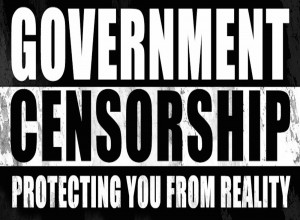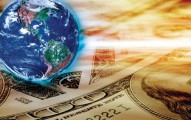It is now less than six days before the Fed will announce perhaps its most important decision of the last five years… whether to raise interest rates or keep rates where they are. And while analysts have been making predictions on this potentially game changing event, very few actually know what the results will be because whichever choice is made will have detrimental consequences for the economy.
What has really been the catalyst for the divergence in the Fed simply jawboning that they will raise rates for nearly a year is the fact that nearly all economic data points have been either manipulated or reported as outright lies which have skewed the belief that the economy is in recovery and strong enough to stand on its own if interest rates began to rise. And for all the propaganda behind consumer spending, unemployment, gdp, and corporate earnings being ‘very good’ as the wombats on CNBC promote each and every day, the U.S. central bank has to know the truth behind all of these ponzi schemes and it makes acting in accordance to their own rhetoric very difficult when the reality of the data is both in opposition to their words, and in some cases even worse than before 2008.
UMich Consumer Confidence Tumbles To 12-Month Lows With Biggest Miss On Record
Having fallen and missed the last two months, UMich Consumer Sentiment plunged in September’s preliminary data from 91.9 to 85.7 (dramatically missing the 91.1 expectations) crashing to its lowest in a year. This is the biggest miss on record. Crucially, this is the all-important factor that The Fed’s Dudley said he would be monitoring ahead of his decision on rate hikes… Hope collapsed as “expectations” tumbled from 83.4 to 76.4 - the lowest in a year as 73% of respondents cited negative economic developments seeing a weaker econmomy due to a global growth slowdown.
Last Economic Data Point The Fed Sees Ahead Of Rate Hike Decision Is Set To Tumble
Earlier today, Bank of America confirmed just that using its internal data, which tracks aggregate spending on credit and debit
cards, showing that consumers reduced spending in August.And they reduced it substantially: According to the Bank, while the drop was not as pronounced as what Gallup reported (which saw average daily spending slide from $91/day to $89/day), it was still enough to dramatically impact the economy: “our headline measure, retail sales ex-autos, plunged 0.8% mom seasonally adjusted.”
And then we get what has been the norm for economic data since last October… a report that contradicts another report on the same indicator.
Fed Rate Hike Odds Rise After Hotter-Than-Expected Producer Price Data
While still well below Fed mandated levels, the 0.9% year-over-year rise in PPI Final Demand ex Food & Energy is the hottest since March and notably above expectations. While the headline PPI Final Demand YoY has not risen for 8 months, surging prices for chicken eggs (+23%) and apparel (+7%) in August made up a considerable part of the inflation index move and bond yields and stocks are leaking lower on the news ahead of next week’s FOMC meeting.
So which data is accurate, and better yet, which data is relevant to the Fed’s choosing to raise interest rates next week?
The answer may actually be… none of these.
The U.S. gross federal debt currently stands at $17.548 trillion, and net interest payments to our creditors are the fastest-growing item in the budget. In 2014, the Congressional Budget Office projects that the nation will spend $233 billion on interest payments. By the end of the budget window in 2024, however, CBO forecasts that interest payments will nearly quadruple to an astonishing $880 billion. Every dollar spent paying our creditors is a dollar wasted—money for which we get nothing in return. Interest payments threaten to crowd out every other budget item. – Mises Institute, Canada
And this is just the consequences raising interest rates will have to the government budget, and does not take into consideration maturing Treasury debt, or the trillions in derivatives tied to interest rate affected securities.
So will the Fed destroy their long standing mantra that the economy in the U.S. is ‘very good’, or will they willingly set in motion the next collapse by increasing the cost of money which has its tentacles into tens if not hundreds of trillions of dollars worthy of outstanding debt?
My guess is that they won’t raise rates… not next week, nor forever. And if they are intelligent enough to look at the true data versus their manipulated propaganda, they will have little choice but to crank up the printing presses very soon and usher in what Dr. Jim Willie calls, QE to infinity squared.
Kenneth Schortgen Jr is a writer for Secretsofthefed.com, Examiner.com, Roguemoney.net, and To the Death Media, and hosts the popular web blog, The Daily Economist. Ken can also be heard Wednesday afternoons giving an weekly economic report on the Angel Clark radio show.



